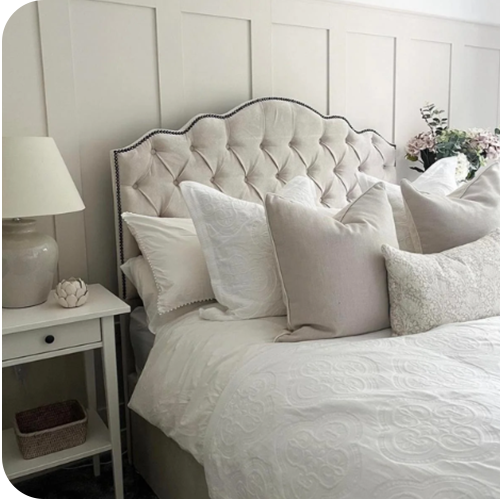How to Care for Your Dining Table and Chairs
Taking care of your dining table and chairs is essential to ensure they stay in top-notch condition for years to come. Whether you have a classic wooden set or a modern glass ensemble, proper care not only enhances their aesthetic appeal but also prolongs their lifespan. In this guide, we’ll delve into practical tips and tricks to keep your dining furniture looking as good as new.
Table of contents
Importance of Maintenance
Regular maintenance not only keeps your dining table and chairs looking attractive but also prevents potential damage. By dedicating a little time to care, you’ll save money on repairs and replacements in the long run.
| Dos | Don’ts |
| Use gentle, furniture-friendly cleaners: | Avoid harsh chemicals: |
| Opt for mild cleaning solutions designed for wood or the material of your dining furniture. | Harshchemicals (abrasive cleaners, bleach, or ammonia-based solutions) can damage the finish. |
| Dust regularly: | Skip testing: |
| Regular dusting helps prevent dirt and debris buildup, maintaining a clean and polished look. | Before using any cleaner, test it on a small, inconspicuous area to ensure it doesn’t cause discoloration or damage. |
| Wipe spills promptly: | Over-wet surfaces: |
| Immediate action on spills prevents stains and potential damage to the finish. | Excess moisture can harm the wood or finish; avoid over-wetting and ensure thorough drying. |
| Follow manufacturer’s guidelines: | Use abrasive tools: |
| Refer to the manufacturer’s care instructions for recommended cleaning products and methods. | Scrubbing with abrasive tools or rough materials can scratch the surface; stick to soft, non-abrasive cloths or sponges for cleaning. |
General Care Tips for Dining Tables and Chairs

Cleaning Dos and Don’ts
Cleaning is the cornerstone of maintenance. However, it’s crucial to use the right methods and products. Avoid harsh chemicals that may damage the finish, and opt for gentle, furniture-friendly cleaners.
Protective Measures
Consider using tablecloths, placemats, or coasters to shield the surfaces from spills, scratches, and heat. These simple additions can significantly extend the life of your dining set.
Tablecloths:
- Acts as a protective barrier for the table surface.
- Shields against spills, preventing liquids from directly contacting the table.
- Adds a decorative touch to the dining area.
Placemats:
- Provides individual protection for each place setting.
- Prevents scratches from dishes and utensils.
- Easy to clean and replace, offering a practical solution for daily use.
Coasters:
- Specifically designed to protect against heat damage from hot beverages.
- Small, portable, and easy to store when not in use.
- Ideal for preventing unsightly heat rings on wooden surfaces.
Specific Care for Different Materials

Wooden dining sets require special attention. Regular polishing and waxing help maintain the wood’s natural luster and protect it from moisture. Use a soft cloth to apply furniture polish and a separate cloth for buffing.
Glass Furniture
Cleaning and Streak Prevention
For glass tables and chairs, a streak-free shine is essential. Mix equal parts vinegar and water for an effective, natural glass cleaner. Wipe the surfaces with a microfiber cloth to prevent streaks and smudges.
To achieve a streak-free shine on glass tables and chairs, create a natural glass cleaner by combining equal parts vinegar and water. Mix the solution thoroughly. Apply the mixture to the surfaces and wipe them down using a microfiber cloth.
This method effectively cleans the glass while preventing streaks and smudges. The acidity of vinegar aids in breaking down grime, and the microfiber cloth ensures a smooth, streak-free finish. Regular use of this simple solution maintains the cleanliness and clarity of glass furniture.
Dealing with Stains
No matter the material, prompt action is crucial when dealing with stains. Blot spills immediately and follow up with appropriate cleaning methods to prevent permanent damage.
Conclusion
Caring for your dining table and chairs is a simple yet effective way to maintain their beauty and functionality. By incorporating these easy tips into your routine, you’ll ensure that your furniture remains a centerpiece for family gatherings and dinner parties.
Readmore:
Future of Mattresses: New Innovations and Technologies
How to Make Your Own Footstool
How to Choose the Best Luxury Bedding?
Frequently Asked Questions
Regular cleaning is recommended, at least once a week, to prevent buildup and damage.
Use a touch-up pen or marker that matches the wood color to conceal minor scratches.
While not daily, regular polishing (every few months) helps maintain the wood’s quality.
It’s best to use a mild glass cleaner to avoid damage to the glass surface.



